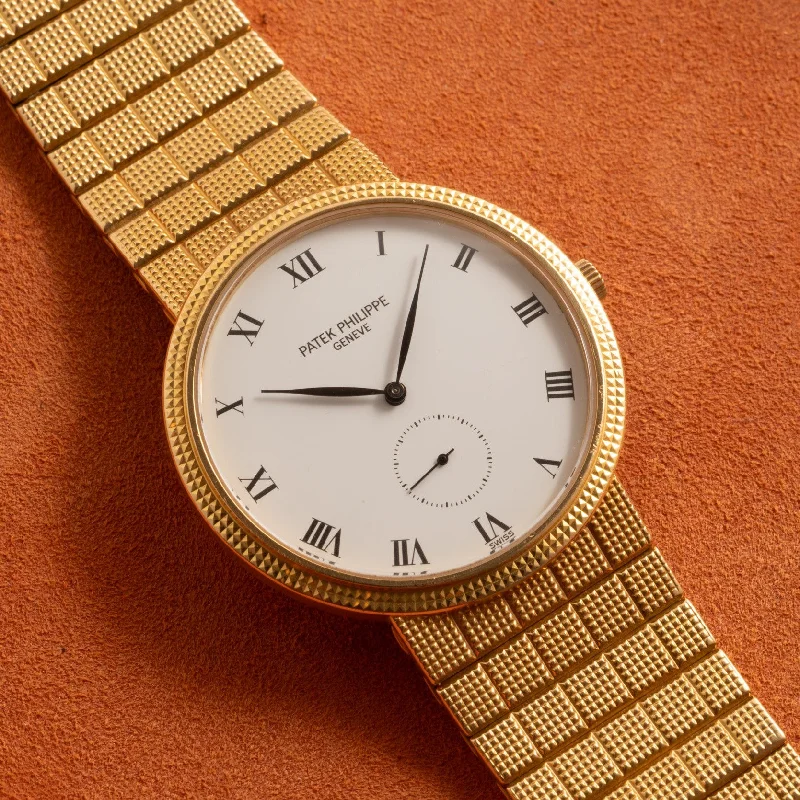Patek Philippe has long been known for its complicated watchmaking, but following the stock market crash of 1929, fewer clients had the means to purchase these high-end timepieces. After securing a controlling interest in the firm, Jean and Charles Henri Stern decided to enlist the help of an English designer named David Penney to create a simple watch that would come in at a lower price point and appeal to the firm’s clientele.
Using the principles espoused by the Bauhaus school and its minimalist, function-first philosophy, Penney conceived the Calatrava, taking its name from the Spanish military order established in the 12th century which had become the symbol of Patek Philippe. Since its debut in 1932, the Calatrava has become a byword for a simple, time-only dress watch — even from brands other than Patek itself.
This particular Calatrava, a Reference 3919/1J, features a 33mm yellow gold case with 'hobnail' finishing, a sapphire crystal, a signed crown, and a crisp, glossy white dial with printed black 'Roman' indices and a subsidiary seconds register at 6:00, and a matching black 'feuille' handset.
Powered by Patek Philippe's manual winding Calibre 215 PS movement, this example comes fitted to a rarely seen, integrated yellow gold woven bracelet with matching 'hobnail' finishing on the surface and a signed locking clasp.
Sure, you could get yourself a modern dress watch that tells the time just fine — and that probably ends up in a drawer after a while.
But a real Calatrava from the world’s greatest watchmaker is forever.

